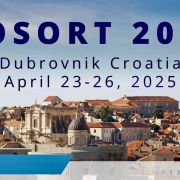BrAIST-Calc: Prediction of Individualized Benefit from Bracing for Adolescent Idiopathic Scoliosis
Lori A Dolan, Stuart L Weinstein, Matthew B Dobbs, John M Jack Flynn, Daniel W Green, Matthew F Halsey, M Timothy Hresko, Walter F Krengel 3rd, Charles T Mehlman, Todd A Milbrandt, Peter O Newton, Nigel Price , James O Sanders, Michael L Schmitz, Richard M Schwend, Suken A Shah, Kit Song, Vishwas Talwalkar
Spine (Phila Pa 1976). 2023 Nov 23.doi: 10.1097/BRS.0000000000004879.
Abstract
Study design: Prospective multicenter study data used for model derivation; externally-validated using retrospective cohort data.
Objective: Derive and validate a prognostic model of benefit from bracing for adolescent idiopathic scoliosis (AIS).
Summary of background data: The Bracing in Adolescent Idiopathic Scoliosis Trial (BrAIST) demonstrated superiority of bracing over observation to prevent curve progression to surgical threshold; 42% of untreated subjects had a good outcome and 28% progressed to surgical threshold despite bracing, likely due to poor adherence. To avoid over-treatment and to promote patient goal setting and adherence, bracing decisions (who and how much) should be based on physician and patient discussions informed by individual-level data from high-quality predictive models.
Methods: Logistic regression was used to predict curve progression to <45 degrees at skeletal maturity (good prognosis) in 269 BrAIST subjects who were observed or braced. Predictors included age, sex, body mass index (BMI), Risser stage, Cobb angle, curve pattern and treatment characteristics (hours of brace wear and in-brace correction). Internal and external validity were evaluated using jackknifed samples of the BrAIST dataset and an independent cohort (n=299) via estimates of discrimination and calibration.
Results: The final model included age, sex, BMI, Risser stage, Cobb angle and hours of brace wear/day. The model demonstrated strong discrimination (c-statistics 0.83 – 0.87) and calibration in all datasets. Classifying patients as low risk (high probability of a good prognosis) at the probability cut point of 70% resulted in a specificity of 92% and positive predictive value of 89%.
Conclusion: This externally-validated model can be used by clinicians and families to make informed, individualized decisions about when, and how much, to brace to avoid progression to surgery. If widely adopted, this model could decrease over-bracing of AIS, improve adherence and most importantly, decrease the likelihood of spinal fusion in this population.



Leave a Reply
Want to join the discussion?Feel free to contribute!